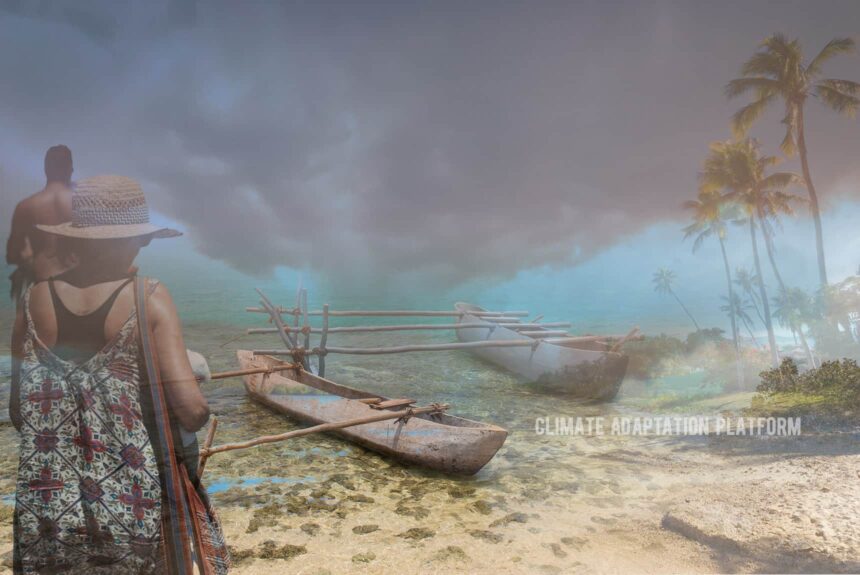Fiji is among the most vulnerable countries to climate change and climate-related disasters. As a small island developing nation located in the middle of the South Pacific Ocean, Fiji is highly exposed to tropical cyclones.
Cyclones usually hit the archipelago during its wet season from November to April. Floods caused by fluvial and pluvial cause high losses equivalent to 2.6% and 1.6% of the country’s GDP, respectively (Fiji, 2021). Fiji is also vulnerable to rising sea levels, floods, and landslides.
Fiji also experiences high temperatures with an average maximum of around 28°C to 29°C. Both meteorological (insufficient rain) and hydrological (deficit in surface and underground water) droughts also affect the country.
The Fiji Times article “Villages raise concerns – Climate change, dust clouds affecting health of people” reports that climate change has affected two Fiji villages. In Waivaka, extreme events from climate change, particularly heat, are getting worse.
The village’s headman Milio Raiyawa, says, “One day it could be scorching, and the next day it could be even hotter – people might think we are used to it, but then it gets just too much”, adding that their freshwater creeks and rivers help them to cool down during scorching temperatures (Kotoisuva,2022).
Just nearly seven kilometres from Waivaka village, Naseovuo villagers are affected by dry weather, poor road infrastructure, and inconsiderate drivers. During dry and humid conditions, heavy vehicles speeding through dirt roads can kick up clouds of dust that cause residents to get sick, especially children.
The villager’s request to tar seal the road made to the government seems to have fallen on deaf ears. It has been two years since the villagers asked the government to tar seal the roads, but despite follow-ups, progress is amiss.
More extreme weather like storms, floods, droughts, heatwaves, and cyclones awaits the villagers as climate change persists, according to the Secretariat of the Pacific Regional Environment Programme (SPREP) Pacific Climate Change Factsheet.
Weather-related disasters increased three times worldwide in the last decade compared to the 1960s. Developing countries with low adaptative capacity, such as Fiji, have been disproportionately affected by climate change impacts.
COP27’s most notable success is establishing “Loss and Damage” payments for developing countries from developed and donor countries.
Many thought this was an impossible achievement, but governments have finally recognised, after many years of pushback, the need for finance to address the severe loss and damage suffered by poor and vulnerable countries like Fiji because of climate change.
Sources:
Fiji. (2021). World Bank Group. Retrieved from https://climateknowledgeportal.worldbank.org/country/fiji/vulnerability
Kotoisuva, P. (2022, December 19). Villages raise concerns – Climate change, dust clouds affecting health of people. The Fiji Times. Retrieved from https://www.fijitimes.com/villages-raise-concerns-climate-change-dust-clouds-affecting-health-of-people/
POST HEADER IMAGE CREDIT: Pacific Ocean Horizons by Ana Maria de Asis. Used with permission.



Leave a Reply